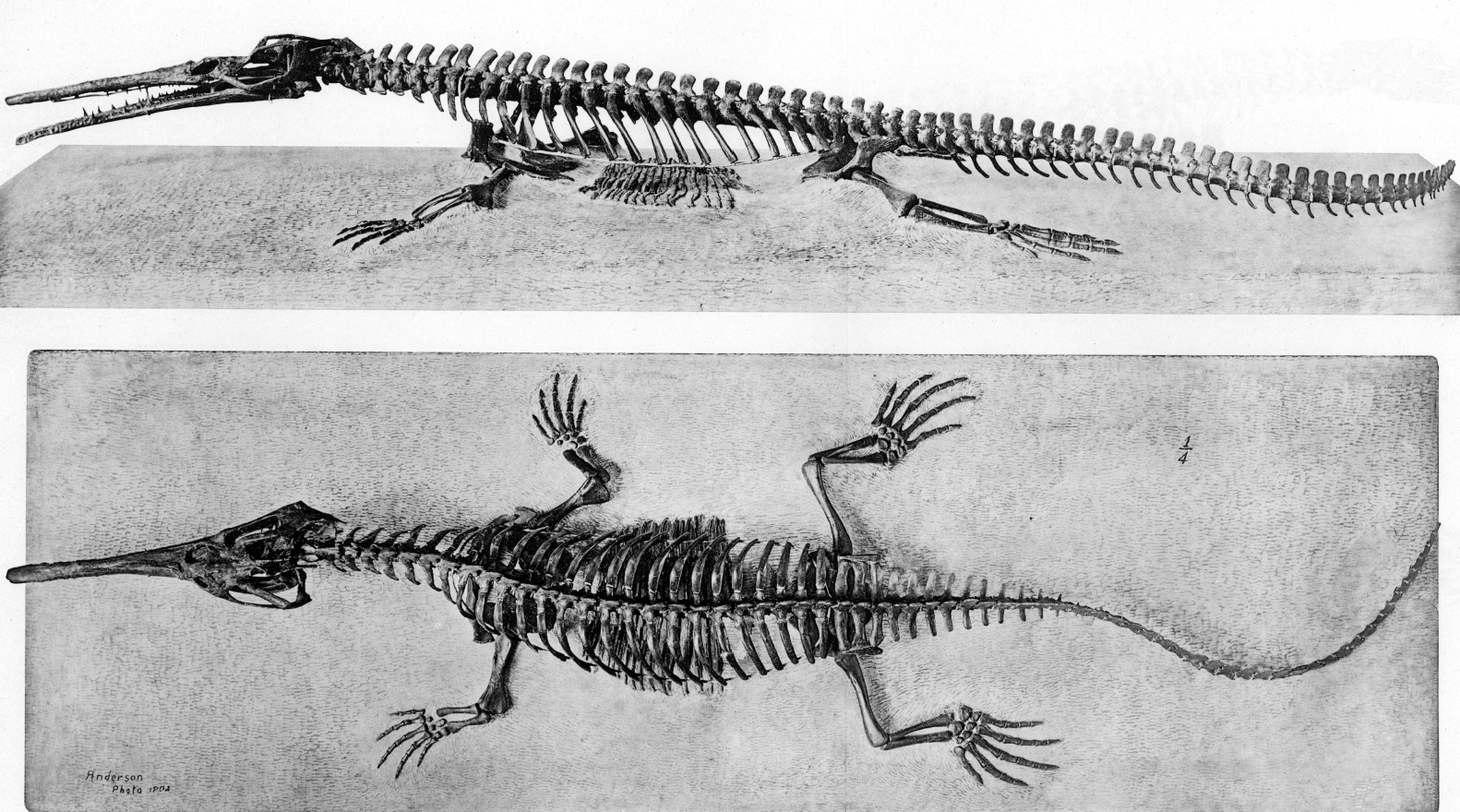|
Pterygoid Bone
The pterygoid is a paired bone forming part of the palate of many vertebrates, behind the palatine bone In anatomy, the palatine bones (; derived from the Latin ''palatum'') are two irregular bones of the facial skeleton in many animal species, located above the uvula in the throat. Together with the maxilla, they comprise the hard palate. Stru ...s. It is a flat and thin lamina, united to the medial side of the pterygoid process of the sphenoid bone, and to the perpendicular lamina of the palatine bone. References Bones of the head and neck {{musculoskeletal-stub ... [...More Info...] [...Related Items...] OR: [Wikipedia] [Google] [Baidu] |
Champsosaurus Skull Diagram
''Champsosaurus'' is an extinction, extinct genus of crocodile-like Choristodera, choristodere reptile, known from the Late Cretaceous and early Paleogene periods of North America and Europe (Campanian–Paleocene). The name ''Champsosaurus'' is thought to come from , () said in an Ancient Greek source to be an Egyptian word for "crocodiles", and , () Greek for "lizard". The morphology of ''Champsosaurus'' resembles that of gharials, with a long, elongated snout. It was native to freshwater environments where it likely preyed on fish, similar to living gharials. History of research ''Champsosaurus'' was the first member of the Choristodera to be described. ''Champsosaurus'' was named by Edward Drinker Cope in 1876, from isolated vertebrae found in Late Cretaceous strata of the Judith River Formation on the banks of the Judith River in Fergus County, Montana, Fergus County, Montana. Cope designated ''C. annectens'' as the type species rather than the first named ''C. profundus'' du ... [...More Info...] [...Related Items...] OR: [Wikipedia] [Google] [Baidu] |
Vertebrate
Vertebrates () are animals with a vertebral column (backbone or spine), and a cranium, or skull. The vertebral column surrounds and protects the spinal cord, while the cranium protects the brain. The vertebrates make up the subphylum Vertebrata with some 65,000 species, by far the largest ranked grouping in the phylum Chordata. The vertebrates include mammals, birds, amphibians, and various classes of fish and reptiles. The fish include the jawless Agnatha, and the jawed Gnathostomata. The jawed fish include both the Chondrichthyes, cartilaginous fish and the Osteichthyes, bony fish. Bony fish include the Sarcopterygii, lobe-finned fish, which gave rise to the tetrapods, the animals with four limbs. Despite their success, vertebrates still only make up less than five percent of all described animal species. The first vertebrates appeared in the Cambrian explosion some 518 million years ago. Jawed vertebrates evolved in the Ordovician, followed by bony fishes in the Devonian. T ... [...More Info...] [...Related Items...] OR: [Wikipedia] [Google] [Baidu] |
Palatine Bone
In anatomy, the palatine bones (; derived from the Latin ''palatum'') are two irregular bones of the facial skeleton in many animal species, located above the uvula in the throat. Together with the maxilla, they comprise the hard palate. Structure The palatine bones are situated at the back of the nasal cavity between the maxilla and the pterygoid process of the sphenoid bone. They contribute to the walls of three cavities: the floor and lateral walls of the nasal cavity, the roof of the mouth, and the floor of the orbits. They help to form the pterygopalatine and pterygoid fossae, and the inferior orbital fissures. Each palatine bone somewhat resembles the letter L, and consists of a horizontal plate, a perpendicular plate, and three projecting processes—the pyramidal process, which is directed backward and lateral from the junction of the two parts, and the orbital and sphenoidal processes, which surmount the vertical part, and are separated by a deep notch, the s ... [...More Info...] [...Related Items...] OR: [Wikipedia] [Google] [Baidu] |
Pterygoid Processes Of The Sphenoid
The pterygoid processes of the sphenoid (from Greek ''pteryx'', ''pterygos'', "wing"), one on either side, descend perpendicularly from the regions where the body and the greater wings of the sphenoid bone unite. Each process consists of a medial pterygoid plate and a lateral pterygoid plate, the latter of which serve as the origins of the medial and lateral pterygoid muscles. The medial pterygoid, along with the masseter allows the jaw to move in a vertical direction as it contracts and relaxes. The lateral pterygoid allows the jaw to move in a horizontal direction during mastication (chewing). Fracture of either plate are used in clinical medicine to distinguish the Le Fort fracture classification for high impact injuries to the sphenoid and maxillary bones. The superior portion of the pterygoid processes are fused anteriorly; a vertical groove, the pterygopalatine fossa, descends on the front of the line of fusion. The plates are separated below by an angular cleft, th ... [...More Info...] [...Related Items...] OR: [Wikipedia] [Google] [Baidu] |
